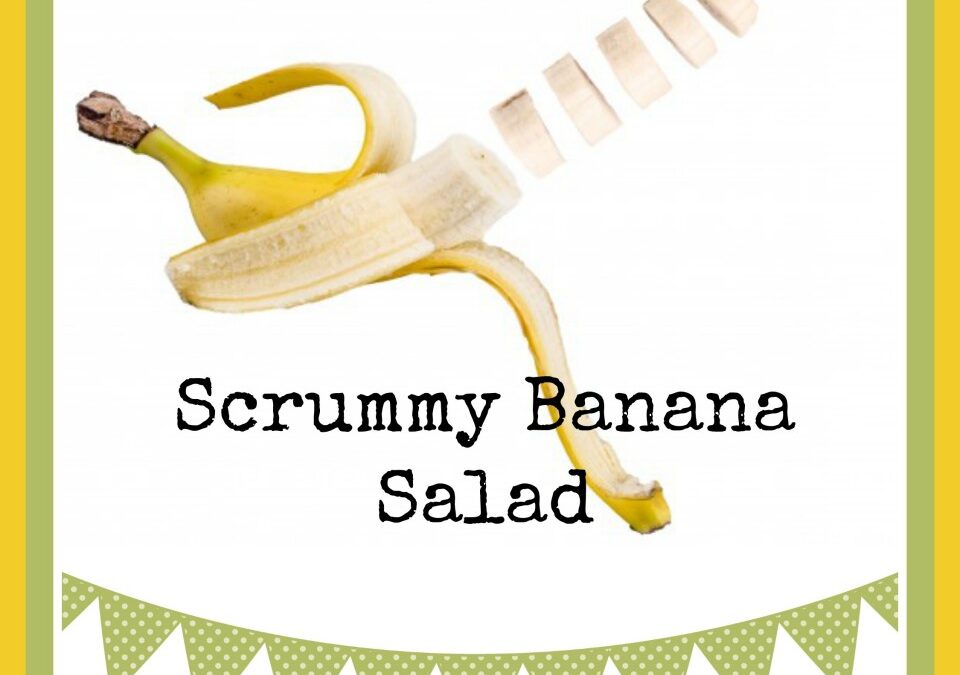
Put a Spring in your step!

Cooking Terms Made Easy


What a super fruit! Deliciously sweet with a firm and creamy flesh, bananas come ready packaged in their own skins and are freely available year round. Easy to eat from a very young age due to their soft creamy flesh, they are a very good source of vitamin B6 and a good source of magnesium, vitamin C, potassium, dietary fiber, potassium, biotin, and copper. No wonder many babies can list bananas in their top 5 list of first foods.
Mother’s around the world enjoy their easy portability, cost effectiveness, and great taste as a quick go-to snack for children of all ages.
Sometimes though, when things are a little less frantic, you have the time to make a delicious salad (go loosely with the word salad) that can actually be eaten as a side dish, a breakfast or a snack. I have had this salad with my meat at a barbeque, as a breakfast with a spoon of muesli added or by simply chopping the banana and apricot into a half tub of yoghurt as a snack.
I’m guessing you’d like to see this really versatile banana salad recipe now, so I’ll let you get on.
[yumprint-recipe id=’2′]
Table of Contents
How do you know which bananas to choose?
Bananas should be firm, but not hard. The size of the banana does not affect its quality. So don’t over look smaller ones because you think they are not as tasty as the bigger ones. Bananas that are green will take longer to ripen than those that are more yellow or have brown spots.
How do you store bananas?
Bananas are actually very fragile and you should take care storing them. If they are still ripening, they should be left at room temperature and not in too hot or too cold temperatures.
How can you ripen bananas?
Did you know that unripe bananas should never be placed in the refrigerator? The cold of the refrigerator interrupts the ripening process so much that it will not ripen even when the bananas are returned to room temperature.
If you need your green bananas to hurry and ripen for a specific date, try putting them in a paper bag or wrap them in newspaper. If you add and apple it will further speed up the process.
Ripe bananas that are not yet needed can be stored in the refrigerator. The cold may cause their peel to darken, but you can rest assured, the flesh will not be affected. , When you are ready to use or eat the bananas, take them out of the fridge and leave them to come back to room temperature to get maximum flavour . For the most health benefits and to make the most of the antioxidants present in bananas, always eat fully ripened fruit. The under ripe ones don’t taste as good anyway!
Can bananas be frozen?
Bananas will keep for about 2 months frozen. You can puree them before freezing (great if you are making baby food) or just remove the peel and wrap the bananas in plastic wrap. It is recommended that to prevent the fruit from turning brown, you add some lemon juice before freezing.
I have to admit though, that I often spot over ripe bananas in the fruit bowl and just put it straight into the freezer like it is. Unpeeled, and uncovered. Then when I’m ready, I cut the top of the banana off and just squish the contents into a bowl. These previously frozen bananas always end up as cupcakes, muffins or banana bread. They seem to be just fine! I’m partly convinced my children allow them to go brown, just so that they can have banana bread!

I am a preschool and primary school teacher and mum to 3 children. I have been involved in education since 1997 and have trained in a variety of educational specialist areas. It is with this expertise that I write articles to help parents and educators provide quality learning experiences for the children in their care.




